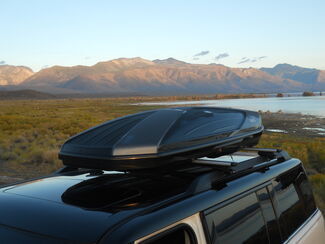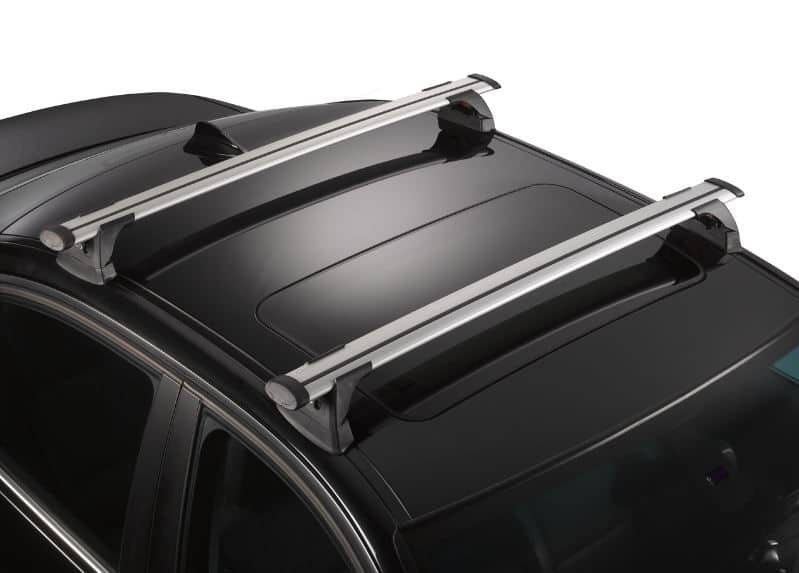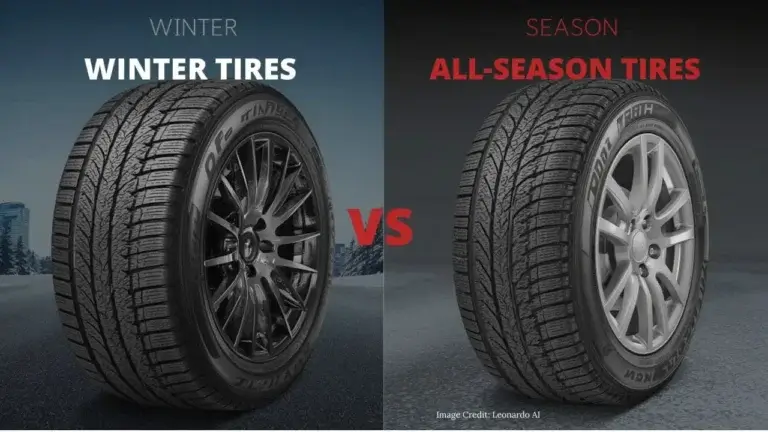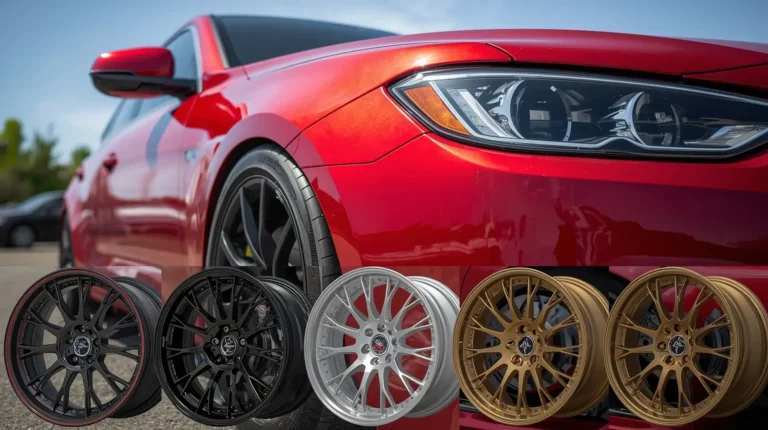A roof rack is an assembly of bars attached to the top of a vehicle. It allows for transportation of bulky items such as luggage, bicycles, and canoes.
Roof racks have become a must-have accessory for adventure seekers and travelers alike. By offering extra space, they make it convenient to carry large equipment that won’t fit inside the car. Not just for outdoor enthusiasts, but also for families needing more cargo capacity on road trips, roof racks provide a practical solution.
They are designed to integrate seamlessly with the contours of modern vehicles, ensuring a secure and aerodynamic fit. With various types customizable to different needs, these racks boost your vehicle’s utility without compromising on style. Always check your vehicle’s weight capacity to ensure safe travel when utilizing a roof rack for cargo transport.
Introduction To Roof Racks
Roof racks, an essential for travelers and outdoor enthusiasts, offer extra storage space. They let you carry more gear on your vehicle. They fit on top of your car. They hold items like bikes, kayaks, and luggage.
The Concept And Basic Use
Roof racks are horizontal bars attached across a vehicle’s roof. They expand your car’s cargo capability. With a roof rack, bulky items travel outside, freeing interior space. This is ideal for family trips, sports equipment, or camping gear.
- Main function: Provide additional storage.
- Benefits: Free up interior car space.
- Materials: Usually made of metal or hard plastic.
- Adjustability: Can adjust to fit various vehicle sizes.
- Compatibility: Some racks designed for specific items.
Historical Evolution And Modern Applications
Originating in the mid-20th century, roof racks have evolved. They now feature advanced materials. They are also easier to install. Today’s racks are aerodynamic, cutting down on wind noise and resistance.
| Decade | Evolution | Modern Use |
|---|---|---|
| 1950s | Basic metal frames | Outdoor sports equipment |
| 1970s | Vehicle-specific racks | Commercial transports |
| 1990s | Aerodynamic designs | Travel luggage |
| 2020s | Smart features, light materials | Adventure gear |
Roof racks now suit a wide range of applications. They help in everyday life and adventure trips. They are handy for transport and sports equipment. Roof racks meet the need for extra storage on modern vehicles.
Types Of Roof Racks
An essential accessory for adventure-seekers and travel enthusiasts alike, roof racks offer extra storage space on top of your vehicle. Let’s explore the different types of roof racks available, tailored to suit various needs and preferences.
Factory-installed Vs. Aftermarket
Factory-installed roof racks come pre-equipped on your vehicle. They are designed to complement your vehicle’s aesthetics and aerodynamics.
- Perfect match for your car’s specifications.
- Often less versatile than aftermarket solutions.
- Integrated seamlessly with the vehicle design.
Aftermarket roof racks, on the other hand, are all about customization.
- Wide variety to fit different vehicles.
- Flexible and adaptable, with various attachments.
- Usually offer higher load capacities.
Materials And Construction Differences
The materials and construction of roof racks determine their durability and weight capacity.
| Material | Benefits | Drawbacks |
|---|---|---|
| Aluminum | Lightweight, rust-resistant | May be less durable than steel |
| Steel | Highly durable, stronger | Heavier, may corrode over time |
| Plastic | Affordable, good for light loads | Less sturdy, less secure |
When choosing a roof rack, consider the balance between strength and weight. It’s crucial for fuel efficiency and vehicle handling.
Determining Compatibility
Roof racks are essential for drivers needing extra storage space. To find the right fit, understanding your vehicle’s compatibility with a roof rack is crucial. Compatibility includes vehicle specifications and load limitations. Let’s make sure you pick the perfect match for your ride.
Vehicle Specifications
Start with your vehicle’s make, model, and year. This information guides you to racks designed for your car’s size and shape. Next, check for a pre-installed roof rail system. If it’s there, your job just got easier. If it’s not, no worries. Many racks come with fitting kits for vehicles without rails. Always refer to the owner’s manual. It’s your go-to guide for roof specifications.
| Vehicle Part | Details Needed |
|---|---|
| Roof Type | Bare, side rails, or crossbars |
| Fixed Points | Mounting spots under door seals |
Load Capacity And Limitations
Every roof rack has a weight limit. Even sturdy ones. You must know yours. Overloading risks damage to your car and can cause accidents. Vehicle manuals list roof weight capacities. They vary with each car model. Proper use ensures safety. Mind the roof’s dynamic and static load ratings. Dynamic is for driving, static for stationary.
- Dynamic Load Capacity: Weight while moving
- Static Load Capacity: Weight when parked

Credit: www.etrailer.com
Installation Process
Outfitting your vehicle with a roof rack expands its capability, allowing for versatile cargo management. The installation process can be straightforward if completed with care and proper guidance. Let’s dive into the required tools and equipment before tackling the installation steps.
Tools And Equipment Needed
Before beginning the installation, gather the following:
- Roof rack kit (specific to your vehicle model)
- Socket wrench
- Screwdriver set
- Measuring tape
- Torque wrench
- Protective gloves
- Rubber mallet (optional, for certain models)
Step-by-step Guide
- Read the manufacturer’s instructions carefully.
- Open the roof rack kit and organize all parts.
- Measure and mark the position for the roof rack on your vehicle.
- Place the mounts onto the roof, aligning them with your markings.
- Hand-tighten the bolts to secure the mounts in place.
- Use the socket wrench to fully secure the mounts.
- Attach the crossbars to the mounts with the hardware provided.
- Ensure all parts are tightly fastened with the torque wrench.
- Double-check alignments and securement of the entire setup.
Always follow the specific instructions for your roof rack model to ensure safety and vehicle integrity. It’s vital to keep the hardware tight and the rack secure at all times.
Safety Concerns And Precautions
Exploring what a roof rack is brings us to an essential aspect: safety. Proper usage ensures a risk-free journey. Ignoring safety tips might lead to accidents, damage, or severe injuries. Let’s dive in and understand how to keep your roof rack experience secure.
Proper load distribution
Proper Load Distribution
Even load distribution prevents vehicle imbalance. It also avoids strain on the vehicle’s roof.
- Keep heavier items closer to the center.
- Balanced loads maintain your car’s center of gravity.
- Overloading can cause roof damage and affect car handling.
Follow the manufacturer’s weight limit. Use a load calculator if available for precise distribution.
Maintenance and checks
Maintenance And Checks
Regular maintenance and checks keep your roof rack in top condition.
| Check | Action |
|---|---|
| Fittings and fixtures | Ensure they are tight and secure. |
| Rack condition | Look for signs of wear and tear. |
| Load stability | Check all items are firmly tied down. |
Inspect the rack before and after every trip. Address any issues immediately to avoid equipment failure.

Credit: ebsadventure.com
Popular Uses Of Roof Racks
Road trips can upgrade from fun to fantastic with an essential tool: the roof rack. This gadget turns the top of your car into extra cargo space. Now, let’s dive into how people commonly use roof racks.
Outdoor And Recreational Activities
Adventurers love roof racks for their versatility. Below are key ways outdoor enthusiasts use them:
- Bikes: Secure bikes on top, and create space inside the car for other gear.
- Kayaks and canoes: Transport watercraft to and from the shore with ease.
- Camping gear: Pack tents, sleeping bags, and more without cramping car space.
- Winter sports equipment: Carry skis and snowboards safely to the slopes.
Commercial And Utility Roles
Roof racks are not just for play; they’re workhorses too. Consider these commercial uses:
- Ladders: Builders and handymen transport ladders to job sites.
- Construction materials: Carry long pipes, timber, and other bulky items.
- Delivery services: More room for parcels means fewer trips back to base.
- Service technicians: Keep tools and equipment handy and organized.
Selecting The Right Roof Rack
Embarking on a road trip or planning an outdoor adventure? A roof rack mounts on top of your vehicle. It carries extra items like luggage, bicycles, kayaks, or camping gear. But, choosing the perfect one is crucial. It must match your needs and vehicle specs. Let’s dive into the process of selecting the best roof rack for your vehicle.
Assessing Needs And Features
To start, list what you’ll carry. Think about the size, weight, and frequency of use. Roof racks come with different features. Some are specialize for sports equipment, while others are universal. Consider these factors:
- Weight Capacity: Match the rack’s capacity with your cargo weight.
- Compatibility: Ensure it fits your car make, model, and roof type.
- Material: Look for durable materials like aluminum or steel.
- Locking Mechanism: For security, choose racks with locks.
- Accessibility: Racks should offer easy access to your gear.
- Installation: Check if you can install it yourself or need a professional.
Brand And Product Comparisons
Once you know your needs, compare different brands and products. Top-rated brands often offer quality and durability. Look for user reviews, ratings, and industry recommendations to guide you. Product comparison is easier with a table:
| Brand | Model | Material | Weight Capacity | User Rating |
|---|---|---|---|---|
| Brand A | Model X | Aluminum | 150 lbs | 4.5 Stars |
| Brand B | Model Y | Steel | 120 lbs | 4.0 Stars |
| Brand C | Model Z | Alloy | 130 lbs | 4.7 Stars |
Focus on your must-have features and budget. A good brand offers customer support and warranty. Compare thoroughly to make a smart decision. Your rack should be a long-term investment for all your adventures.
Accessories And Add-ons
Roof racks turn your car into a cargo-carrying machine. But, the rack alone is just the beginning. Accessories and add-ons maximize your space and keep your gear safe. Let’s explore some popular choices.
Cargo Boxes, Baskets, And Bags
Cargo boxes protect your belongings from the elements. They’re perfect for long trips. Baskets provide easy access and flexibility for oversized items. For versatility, cargo bags fold away when not in use.
- Weatherproof: Cargo boxes shield against rain and snow.
- Durable: Baskets handle rough gear, like firewood or tools.
- Portable: Cargo bags can be removed and stored easily.
Mounting Systems And Security Locks
To hold your gear in place, mounting systems are crucial. They should be matched with your vehicle for a perfect fit. Security locks keep your belongings safe from theft.
| Accessory | Function | Benefit |
|---|---|---|
| Mounting Kits | Connect racks to vehicle | Customized for car model |
| Lock Cylinders | Secure gear to rack | Peace of mind |
Legal And Insurance Implications
A roof rack is a sturdy frame attached on top of a vehicle for transporting bulky items. Exploring the legal and insurance implications is critical, as improper use can lead to traffic violations or voided coverage claims during accidents. Always ensure compatibility and secure loading to mitigate risks.
Understanding the rules and insurance adjustments for roof racks is crucial for any car owner. It’s not just about securing cargo; it’s also about abiding by the law and ensuring your coverage remains intact. This section dives into the legal and insurance aspects every vehicle owner should know about.
Traffic Regulations And Bylaws
Every country and city has its own set of traffic laws regarding roof racks. To avoid penalties, it’s vital to understand and comply with these rules:
- Height restrictions: Ensure your rack and load do not exceed legal height limits.
- Load securing: Cargo must be tightly secured to prevent accidents.
- Visibility: Ensure that your load does not block view of traffic lights or signs.
Impact On Vehicle Insurance
A roof rack can influence your insurance policy. Inform your insurer about the installation to maintain coverage. Here are key insurance considerations:
| Consideration | Detail |
|---|---|
| Premium changes: | Premiums might rise due to perceived risk. |
| Coverage limits: | Check if your plan has a roof rack inclusion or exclusion. |
| Liability: | If items fall, you may be liable for damages. |

Credit: gearjunkie.com
Future Of Roof Racks
The Future of Roof Racks heralds an intriguing era. Innovations and technology aim to blend functionality with sustainability. Cutting-edge design and eco-friendly materials set the pace for tomorrow’s roof rack systems.
Technological Advancements
The quest for better performance and user convenience drives roof rack evolution. Manufacturers are now integrating:
- Smart features like automated loading systems.
- Adjustable configurations catering to different cargo types.
- Sensors for enhanced load distribution and safety.
Technologies like aerodynamics improve fuel efficiency. This reduces drag and noise, crucial for long trips.
Environmental Considerations And Innovations
Environmental impact shapes roof rack development. Focus includes:
- Recyclable materials to lower carbon footprints.
- Lightweight designs that reduce fuel consumption.
- Solar panel integration for powering accessories.
Future designs strive for a balance between durability and environmental sustainability.
Frequently Asked Questions For What Is A Roof Rack?
What Is A Roof Rack Used For?
A roof rack is a set of bars secured to the roof of a vehicle. It’s used to transport bulky items such as luggage, bicycles, canoes, kayaks, skis, or various carriers and containers. They provide extra space for travelers and outdoor enthusiasts.
How To Install A Roof Rack?
Roof racks are installed by attaching them to a vehicle’s existing roof rails or mounts. First, assemble the rack according to the manufacturer’s instructions. Then, position it on the roof and tighten the mounting hardware to secure it. Always check the manufacturer’s guidelines for specific installation steps.
Can A Roof Rack Damage Your Car?
If installed and used correctly, a roof rack should not damage your car. Ensure it’s properly attached and the load is within the manufacturer’s specified weight limit. Incorrect installation or overloading can lead to scratches, dents, or decreased vehicle performance.
Are Roof Racks Universal?
Roof racks are not strictly universal as they must match the specific make and model of your vehicle. However, there are universal roof rack options available that can be adjusted to fit a wide range of vehicles with the help of a fitting kit.
Conclusion
Understanding roof racks is essential for optimizing your vehicle’s storage capabilities. Whether for daily use or adventure trips, they offer a versatile solution. Investing in the right roof rack can transform your travel experience. Remember to consider compatibility, durability, and your specific needs when selecting a rack.
Drive safely and make the most of your enhanced cargo space!




